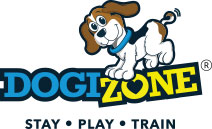3 Tips to Stop Jumping Fast
Even though it flows from a limitless reserve of unconditional love, the unexpected greeting of a jumping dog (especially a large one) can be aggravating at times to family and disconcerting to friends and strangers, so it’s a good idea to begin to discourage this type of behavior as soon as you see it happening. Here are a few tips to make your job a little easier:
1. First, don’t encourage bad behavior. Remember that your dog is always glad to see you, especially if he or she has been alone for a long time, and any recognition from you when he jumps will only encourage bad behavior. COMPLETELY IGNORE him in every way until he is calm and on all fours, or sitting for an extended period of time: no touching, talking, eye contact or even pushing off; dogs can interpret any action from you as positive acceptance of what they’re doing at the time, so do not look at talk to or touch your dog until he stops jumping and is in a relaxed state.
2. As with any training regimin, consistency is the key to success. Every member of your household has to be on board with the program in order to achieve the desired results: Every Person, Every Arrival, Every Time.
Of course, unexpected strangers can throw off your routine a little, so it’s a good idea to let expected visitors know what you’re trying to do before hand, if possible. Sometimes, it’s less confusing for the dog if you put him in another room for a minute until your unexpected visitors have made their entrance and are comfortably seated. A sign or index card on your front door that people enter through saying ” Please do not look at talk to or touch the dog in training” can be very helpful.
3. Every dog is different, so if you’ve been tolerant of jumping behavior for a long time and your “cold shoulder” routine isn’t working as quickly as you’d like, you might have to try a little tough love. Before your dog jumps, try putting him on a leash. When he jumps step on the leash so that he cannot make it to jump on you. It will need to be short enoughthat your dog will not be able to jump all the way up but not continuous tension. When your pup jumps he will bump into the leash at which point you can associate the word “no” with him jumping and hitting the leash. When he’s calm for a minute or so, tell your dog to sitand then reward this constructed positive behavior with some physical contact and a positive tone of voice.
Remember, it’s all about ASSOCIATION. Your ultimate aim is to make jumping uncomfortable and unrewarding, and sitting or staying on all fours the behavior that brings your pet the attention that he craves.
